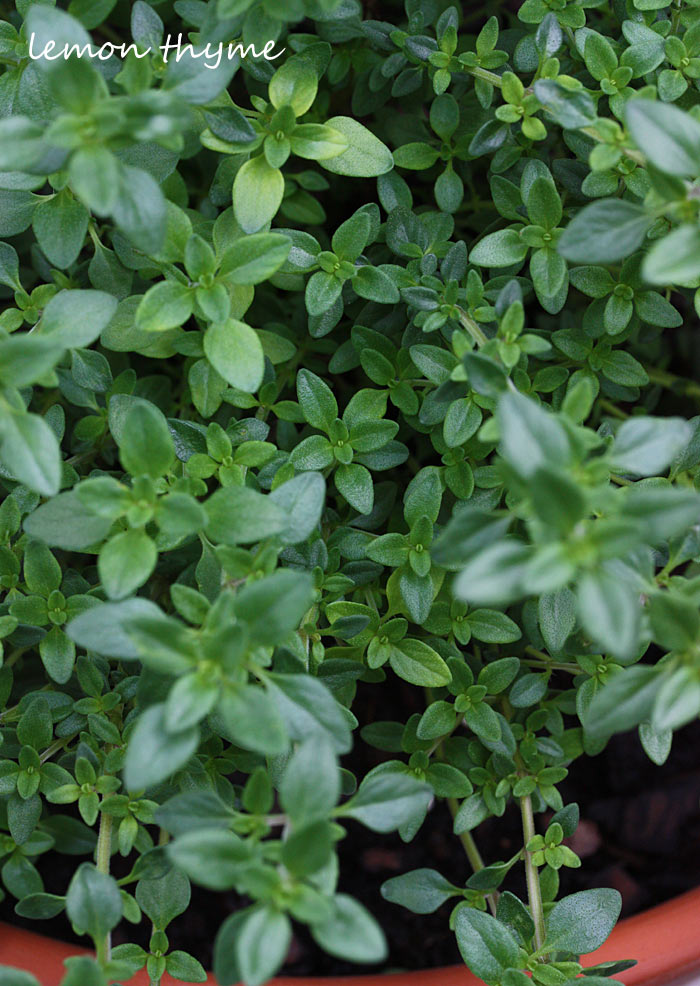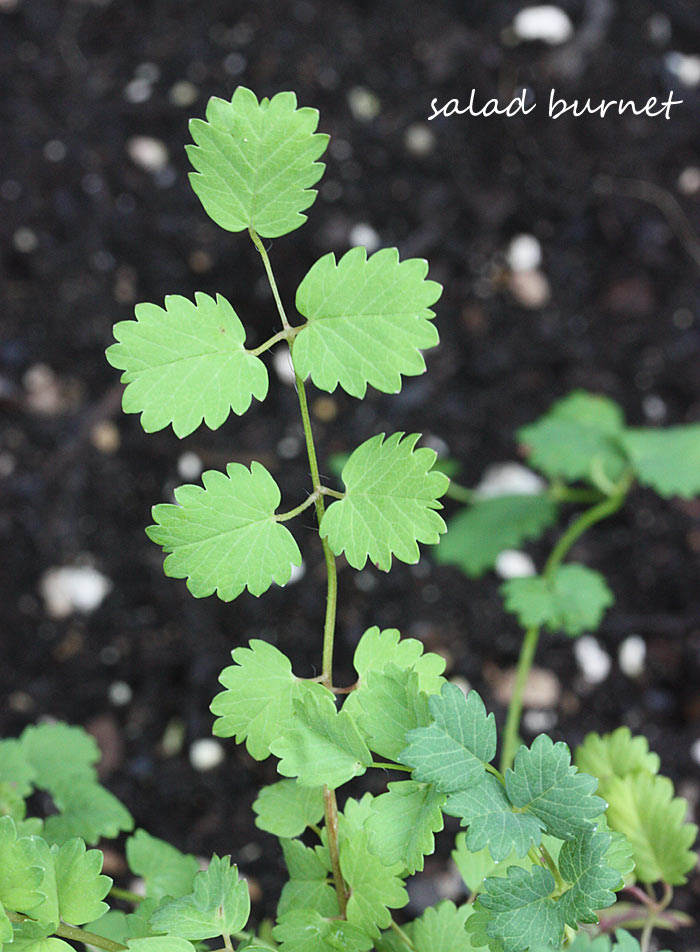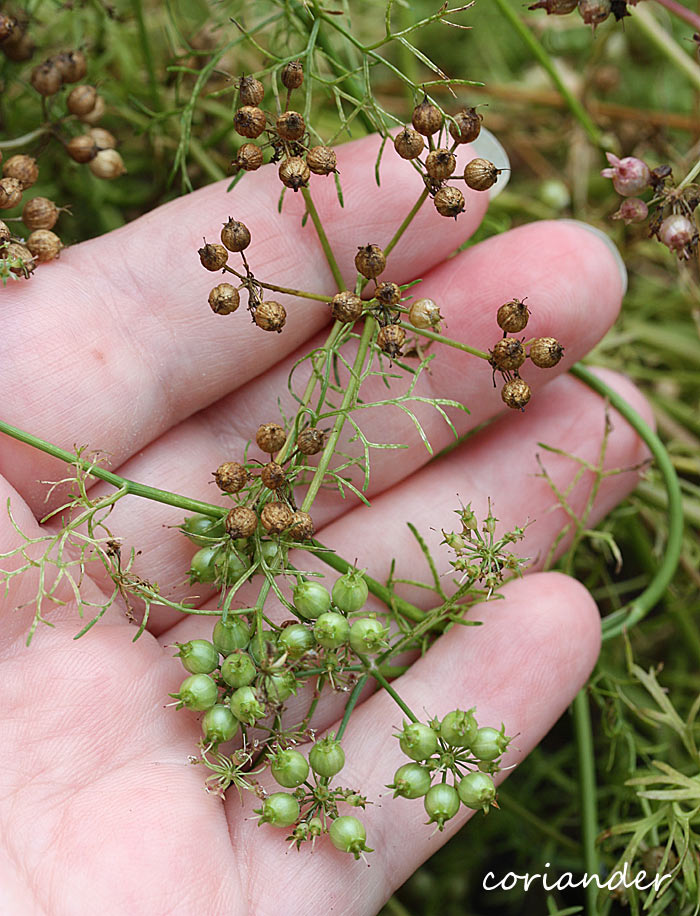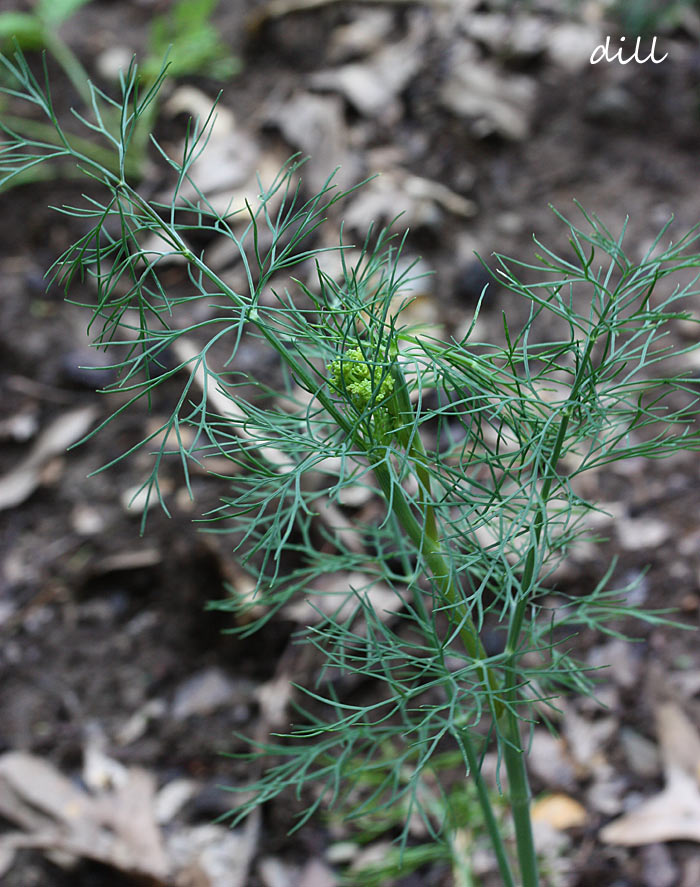A lifelong gardener’s perspective on why you should grow your own vegetables and herbs at home.

We’re about halfway through the growing season at the time this post is being published, but I wanted to back up for a second and make a gardener’s sales pitch for next year.
Or perhaps – like me, sometimes, lol – you need a little pep talk to get through the hottest and driest of months, when disease and hungry critters of various sorts (both winged and four-legged) might be overtaking your favorite tomato and squash plants, and the watering and weeding chores seem endless.
So I hope you’ll indulge me a little while I talk about what growing food means to me. I’m also an avid cook: one passion sprouted the other. I grew up in a backyard gardening family, but once I was out on my own, I had to find my own outlet for the food I was growing.
It’s all related, you know – the food we eat and where it comes from, how it’s grown, why it’s grown. Even if this post doesn’t move you to grab a shovel and plant some fall fennel or broccoli, I hope it promotes positive thoughts about the value of homegrown produce.
This is a bit of a long post – pictures, mostly 😉 – so let’s get started!
Why should you – why do I – grow vegetables at home?
Because it puts *you* in charge of your food
Do you want to eat organic? The best way to do that is to grow your own. The organic food industry – here, referring primarily to packaged/processed food – has taken many strange twists and turns, to the point where trusting that little green seal is a bit of a stretch.
Carrageenan, for example – a controversial additive used for thickening – is technically organic, but has been linked to inflammation, gastrointestinal disease, and even cancer. A family that has chosen to purchase organic foods, thinking it’s the healthiest route, has their well-intentioned plans upended by an overlooked ingredient in, of all things, their yogurt.
When you grow your own produce, you control every aspect of that food’s production, from seed to soil to nutrients.
If you want to eat strictly organic – absolutely no additional fertilizers, fungicides, or pesticides applied to your produce, not even organic formulas – you can probably only do that if you grow your own food.
Truth is, even certified organic farmers selling at the farmers’ market are allowed to use organic formulations that might be against your preferences, such as Bt and copper products.

Additionally, the GMO controversy gets a lot of confused play in the media, but whatever side you land on, when you grow your own you choose whether the seeds and/or transplants you buy are GMO-free.
Do you want to use straight-up conventional maintenance products? I personally don’t support the use of toxins like malathion and glyphosate (the main ingredient in Roundup), but the choice is yours. And even if you go that route, I would bet dollars to doughnuts that you, conventional home gardener, use far fewer doses per square foot than what is sprayed over the industrial agriculture farms that supply grocery stores like Kroger and Publix.
When you grow your own, you know exactly what you put in your soil and on your plants.
Because you’ll probably save money in the long run
Fresh, organic produce is expensive. I could write a book about why this is so, but one of the primary reasons is scale.
Industrial agriculture produces cheap, conventional food because it’s done on an enormous scale with huge machinery, a boatload of toxic chemicals to control weeds and pests, and grossly underpaid field workers. It values varieties that can withstand shipping and handling, no matter how bland they taste (hello, grocery store tomatoes).
Home gardening is also efficient, because the scale usually matches the available labor, and organic methods are easy to maintain on the typical few hundred square feet of garden land. In other words, one or two people can comfortably maintain a sizable backyard garden that produces enough to supplement the family larder for two or three seasons.
And we home gardeners can choose the most delicious varieties – even if they’re a little more difficult to nurture – because we only have to worry about a few plants. And if they fail, the worst consequence is disappointment, not (hopefully) financial ruin.
Small farmers, on the other hand – the producers who populate the farmers’ markets where we shop – wrestle with scale every season. That same family of home gardeners is now growing food for an entire community, with the same amount of labor (or if they’re lucky, with the occasional assistance of generous volunteers and extended family members).
As a gardener who has severely over-planted her yard in various years, I can tell you that there’s a significant maintenance difference between 20 tomato plants (totally doable) and 50 (yikies).
See these beautiful one-pounders:

These are Cherokee Purple tomatoes, an intensely flavorful and dependable heirloom variety – about $15 worth, if you go by the prices at my local farmers’ markets.
Say what?! Three for $15?
That’s right. Heirloom tomatoes can be a pain to grow. They’re finicky, diseases love them, and the most flavorful varieties are often the lowest yielders. Hat tip to the farmer who grows Brandywines. They are gorgeous, mouthwatering tomatoes, and if you get a dozen salable (read, “pretty”) fruits from a single plant in one season, you’ve performed a minor miracle. Multiply that plant by the number of tomatoes you need to bring to market over the course of a summer. Ay, caramba.
Industrial agriculture wouldn’t touch Brandywines with a 10 foot pole. On a small farming scale, growing Brandywines is expensive (in terms of fruit produced per square foot) and risky (e.g., what happens if half of the plants succumb to disease or weather? All that labor, down the drain.). Add it all up: $4+ per pound for tomatoes at the market is a bargain.
But I’m not gonna lie – it hurts the wallet.
At home, growing a Brandywine or Cherokee Purple tomato isn’t much of a risk. Ten to 16 of these garden jewels per plant – with say, 10 plants – for a family of four is an acceptable yield, with a final cost much lower than $4/lb.
So, if you have a particular summer vegetable obsession – as I do with tomatoes and sweet potatoes – there’s a more than fair chance that you’ll save a good chunk of change by growing your own.
Now, if you’re just a buy-one-tomato-now-and-then-for-a-caprese-salad kind of person, growing a lot of tomatoes in your garden might be overkill. (That’s me with watermelon: I’ll happily buy them at the farmers’ market, because I don’t want to commit the garden space to these huge viners.)
But if you’re a food preserver who needs large quantities, then growing your own makes a lot of sense (and cents [pun groan]).
Heirloom cherry tomatoes – which make ahhhmazing tomato paste – positively cover every flat surface in my kitchen right now. Out of curiosity, I measured them out by the pint, but stopped when I passed the $30-total-at-the-market quantity.
Even with the year’s gardening costs figured in (plus a somewhat weak production year, due to heavy, frequent rains), I’ll be saving money, not only from not having to buy spaghetti sauce and tomato paste later this winter, but also up-front, bottom-line costs of the delicious heirloom tomatoes needed to make the goods now.
The same goes with herbs (more on those in a second, below): it’s maddening to have to buy a big bunch when you need just a palmful for dinner’s recipe. With most herbs in the garden, you pick only what you need, and the plant continues to chug along quite happily until you need more. No-waste efficiency.
Because when you grow your own, you discover some really cool varieties
Farmers grow only what they can sell. They might take a chance and experiment now and then – and it certainly might be different in other parts of the U.S., say, on the coasts – but I’ve noted that my Midwestern farmers’ markets offer similar selections from stall to stall. Maybe the Midwestern vegetable palate isn’t a very adventurous one, I don’t know.
If you’re itching to try something new, you might just have to grow it yourself. Take the Green Zebra tomato:

This beauty is ripe when the skin is a light greenish gold with bold green stripes. At all stages, the flesh is green! The Green Zebra is one of my favorite tomatoes, with a bright, citrusy tomato flavor. And it’s especially pretty in rainbow tomato salads.
But you’re not likely to find this baby at a farmers’ markets. Folks see a box full of green tomatoes this early in the season and keep right on walking towards the fire engine red Brandywines in the stall across the way. I had never tasted a Green Zebra until I grew my own.
Oh, and rainbow carrots! I see stacks and stacks of orange carrots at the market. But I took a handful of purple, red, orange, yellow, and white carrot seeds, shook ’em up, and scattered them over my carrot bed. Now I get a little surprise whenever I pull carrots for dinner. 😉
I can do that, because I don’t have to worry about choosing varieties that grow straight and long and blemish-free (sad to say, but aesthetics still matter at the market – the perception of “ugly” vegetables is slowly changing, but there’s still much educating to be done).
I can grow a mix of short carrots and long skinny carrots, and if they happen to twist into the funky shapes that make for popular viral photos on the internet, I don’t care, because they’ll still taste great in my salad.
And when you begin growing your own vegetables, you get an introduction to the yearly wonder that is seed catalog season. By December, we vegetable gardeners have had our rest from the crazy-busy summer/autumn growing season, and we’re ready to start thinking about the next year’s crops.
And – ta-da – along comes those gorgeously photographed catalogs full of all the beautiful vegetables we could possibly want to grow. There are some amazing varieties out there, and the best way to discover them is by pulling up a cozy seat in the dead of winter and thumbing through the seed catalogs.
Because you learn a lot about nature, whether you want to or not
If there’s anything that will give you an immediate appreciation of the power of Mother Nature – both creative and destructive – it’s a vegetable garden. No two growing seasons are alike. A wildly successful year can be followed by one that tests your sanity at every turn.
Several years back, a new tomato farm joined my neighborhood farmers’ market, run by a couple trying to fulfill their dream of farming full-time. The season started out spectacularly. They grew beautiful, tasty tomatoes in every color of the rainbow.
And then there was a storm. It was no big deal at my house, but at theirs, with wide open fields of tomato plants, it was another story. Wind shear destroyed most of their crops and just like that [snap!], they were out for the season. That story haunts me whenever black clouds roll across the summer horizon. I don’t make a living from the goods in my garden, but it should not be forgotten that Nature is in charge.
The most interesting – if not maddening – lesson for me has been the foraging habits of wild animals.
You love heirloom tomatoes? Well, so do deer, raccoons, squirrels, and chipmunks, all of which live in abundance in my ‘hood. Fortressing a tomato plant against these foes requires an engineering degree and electricity. I don’t have the former, and I’m terrified of the latter, so I take a more conciliatory approach: I just grow a bloomin’ ton of tomatoes, and surround them with 7 feet of fencing (which keeps out the deer, at least).
Squirrels and chipmunks, I’m sorry to say, will have their way with your tomatoes. This is what happened to my first ripe Green Zebra tomato of the season:

I had spied that tomato at noon and happily thought, ooh, dinner!, with the intent to pick it later. “Later” was 2:00pm, but by then … too late. I firmly believe that the squirrels perch in my trees and watch me in the garden, taking notes about what to pluck after I leave.
Why do I still bother?
Because it’s worth it
There is an incredible satisfaction that comes with growing my own dinner that I just can’t get over. In all my decades of gardening, I’ve never had a total failure of a season. Oh, an individual crop might fail – to wit, raccoons have decimated not one, but two, stands of corn plants on two different pieces of property; no freshly picked sweet corn for Karen this year – but the garden as a whole has always produced a gratifying abundance.
Because some crops are honest-to-goodness, black-thumb-proof easy
The first autumn I planted garlic, it was a completely off-the-cuff decision. I stuck grocery store cloves in the ground, covered them over with leaf mulch, shrugged, and went inside to barricade myself against the coming winter.
When Spring finally emerged, so did the garlic sprouts. And a few months later, I had big, beautiful garlic bulbs. Even as a decades-experienced gardener, I was shocked: I did nothing for those plants, and yet **boom** garlic!

Since then, I pay my garlic scant more attention than that first year … and it’s one of my favorite, most reliable crops. Garlic rewards you through its entire life cycle: You plant individual cloves in the fall. Each clove grows into a bulb. Cure the bulb for storage and you have fresh garlic throughout the fall and winter. Save the best bulbs to replant their cloves. And the cycle begins again.
If you’re thinking about starting a garden, I implore you to include garlic in your plans this year. Yes, this year: Garlic is best planted before the first heavy frost, in October or November, for spring harvest next year, so you still have time to make your purchases.
Because freshly picked vegetables taste amazing
I don’t even know how to describe the difference between store-bought green beans and these beans that I grew in a pot on my deck. So fresh and sweet.

Some produce, like corn, begins losing flavor the moment it’s picked, as its sugars quickly turn starchy. So, grocery store corn on the cob that arrives via long-distance delivery truck is, at best, flat in flavor. Corn purchased at the farmers’ market is scads better, although sometimes picked the night before a morning market set-up. But corn that you pick yourself just moments before starting dinner – well, there’s just nothing like it.
I think one of the vital reasons that I’ve always been a vegetable lover is that I grew up on homegrown produce. I didn’t taste a grocery store tomato until I was an adult, but so many of today’s kids are being introduced to vegetables using that industrial ag grocery store crap.
No wonder parents have to sneak cauliflower purée into the mac and cheese: Kids don’t know what organic, freshly picked vegetables really taste like – and that they taste good – because most of what they get is days old (perhaps weeks) and bitter, if not flavorless.
If you have a family, I firmly believe that one of the most important lessons you can teach your children is that of healthy food: how to grow it, how to buy it if you can’t grow your own, and how to prepare and serve it.
Because Herbs
Let me just get this right out there: I love herbs. Basil, dill, thyme, mint, rosemary, tarragon, parsley, cilantro, sage, oregano – I love them, all of them, and so many more.
A caprese salad would not be a caprese salad without fresh basil. Tzatziki is good, but outstanding with dill and mint. Pizza sauce and oregano are like peas and carrots.
These are all basic herbs that you can easily source at your local nursery or garden center in the spring. Did you know that there are more than 50 varieties of culinary basil? The exact number varies from botanist to botanist (some say there are 150!), but I grew seven of them this year, and each plant is as beautiful and fragrant as the next. I have one garden of nothing but basils, and it’s one of the most attractive plantings in the yard.

Lemon thyme (above) is my third thyme cultivar, and she’s a beaut. Perfectly branched with small green leaves, the plant has the most inviting lemon scent and flavor.
Thyme is actually an evergreen, and can be harvested all year long (winter soups!). In the spring, thyme flowers attract honeybees and other important pollinators.

Once you get bitten by the herb bug (so to speak), you learn there are so many more to try. Salad burnet (above) is not available locally as a plant, so the first year I grew it, I took a chance with seeds, and this delightful little plant has become a must-have. It produces sweet little scallop-edged leaves that taste like cucumbers. It’s a beautiful perennial plant that will regrow for many years to come.
Each year, my herb garden gets bigger and bigger with more plants and new varieties. Tomatoes still have my heart, but herbs are running a super close second. They’re easy to grow, easy to maintain. They’ll take your cooking to new heights, and they’re absolutely beautiful in your landscape. Most flower and attract and feed beneficial pollinators, like bees.
If you grow one thing next year, make it an herb. A basil plant in a pot on your porch. Thyme on the edge of a flower bed. Something, anything – grow an herb, and see if you don’t fall in love with it, too.
Because Nature is incredibly efficient.
Did you know that the green herb cilantro and the spice coriander come from the same plant? (These are U.S. nomenclatures, btw.) Cilantro is a cool weather herb, which mean it bolts – that is, it flowers and goes to seed – sometime late in June. If you leave the plant alone with its seed heads intact, allowing the seeds to dry on the plant, by August you’ll have a year’s supply of fresh coriander seeds.
Store them in an air-tight container, and grind to a powder in small batches (say, one or two tablespoons). You won’t believe how bright and citrusy freshly ground coriander smells and tastes compared to those iffy store-bought bottles. (Learn more about cilantro)

Same thing with dill. Fresh dill leaves – the feathery tips on slender stalks – are sometimes called dill weed, or just “dill.”

“Dill seed” are the seeds that are formed after the dill plant flowers, and are used in pickling. Just like cilantro/coriander, you use the fresh, green dill weed in your dishes, sauces, and dressings, and then once the plant flowers – huge, beautiful seed heads with yellow flowers that look like fireworks – you leave it be and harvest the seeds once they dry. Store in a container, or use to sow a second crop of fresh dill.
One plant, many uses. Nature wastes nothing.

And while you’re at it, be sure to grow cucumbers.

Refrigerator pickles are culinary genius, and with your own dill, dill seed, garlic, and cucumbers, you’ll have unforgettable homemade pickles to eat and share by August.
Save those end-of-season green tomatoes (standards or cherries), too. They make awesome pickled green tomatoes.
Because Nature can be a total sweetie pie
And if you’re inside glued to your TikTok feed, you’ll totally miss it.
One year, a lone Rudbeckia (Black-eyed Susan) sprouted up through my raspberry patch – via, I’m guessing, a seed deposited randomly within some bird poop – and has returned and spread every year since. Just as the birds finish off the last of the leftover fruit, these beautiful blooms appear and stick around through September.

Because you can. And quite frankly, you should.
When I was a kid, everyone on the street had a vegetable garden. It was no big deal, nothing special. It’s just what you did. Today, no home within shouting distance of me has a vegetable garden.
I know what the argument is: time. Everyone’s busy. I’m not suggesting that anyone start a small farm, or even plant as much as I do. I simply believe that we won’t, societally, begin solving our extensive food industry problems until we take matters into our own hands. And that means shopping locally when possible, and growing something – basil in a pot! – if for no other reason than to understand, first hand, what it takes to create healthy, sustainable food.
Plus, you get tomatoes and herbs out of the deal. 😉

 Welcome! I'm Karen, Chief Gardener, Tool Cleaner, Tomato Pruner, and Cabbage Worm Picker-Offer.
Welcome! I'm Karen, Chief Gardener, Tool Cleaner, Tomato Pruner, and Cabbage Worm Picker-Offer.
I totally agree with this. Growing your own foods is really helpful especially during the Pandemic. If you have your own vegetables, you don’t have to buy them and eventually save plenty of money. You can also assure that your vegetables are 100% organic. I currently have mint leaves, coriander, bird eye chili, lemon, basil, and onion on small pots on my balcony.